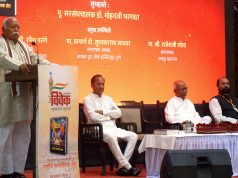
By Balbir Punj
With thousands of madrasas mushrooming all over the country, is it possible to build an egalitarian, secular and modern society with a shared idea of a progressive India? This question has once again become relevant in the backdrop of what happened in West Bengal recently. In the first week of July, Muslim mobs went berserk in the border state after a minor put up an offensive post on Facebook.
Basirhat in the North 24 Parganas district bordering Bangladesh was engulfed in communal riots for several days. While several people were injured in the ensuing violence, one person lost his life and property worth crores was torched by rampaging mobs.
It’s against this backdrop that the role of madrasas is being looked into by the state police. West Bengal, like the rest of India, has a long tradition of madrasas. They can be divided into three categories: government approved and funded, approved but without state-funding and unapproved—without supervision and accountability. In fact most of the madrasas in the country fall in the last category.
According to informed sources, there are about 6,000 madrasas in West Bengal. For the entire country, the number would run into lakhs. And about 90 per cent of the madrasas are not regulated and report to none. In West Bengal, they are called Khareji madrasas.
The riot-hit Basirhat and adjoining areas have about 600 such madrasas. They are run by Muslim organisations, privately-funded, and have only Muslims as staff and students. The syllabus is confined to religious scriptures and practices, and lessons in Arabic. The Khareji madrasas came under the scanner of the local police after one of them was used for imparting arms training to the alleged perpetrators of the 2014 blast in Burdwan district which left two people dead.
The National Investigation Agency (NIA) inquired into the blast and unearthed an active jihadi network. There have been serious allegations that some of the madrasas are used by fundamentalists to radicalise and recruit Muslim youngsters for terrorist activities. In 2002, the then WB Chief Minister Buddhadeb Bhattacharjee too had expressed similar concerns.
Last year, the Kerala police filed a case against Peace Education Foundation “that runs a chain of schools in Kerala and neighbouring states for including objectionable study material in the school curriculum aimed at disrupting communal harmony.” The police got interested in the group after it came to light that some of the 21 missing persons from the state believed to have joined the Islamic State, worked in the schools run by the foundation. A case was registered under section 153 (A) of the IPC (Promoting enmity between different groups on grounds of religion …)
When the state education department examined the schools’ syllabus, they found that some lessons lauded a single religion and showed others in bad light. Interestingly, the schools were affiliated to the CBSE. The affiliation of such religion-inspired institutions to a government body has no meaning, for they take advantage of corruption and inefficiency inbuilt into the Indian bureaucratic system.
The Sachar Committee set up by the UPA government in 2005 to report on the “social, economic and educational conditions of the Muslim community in India” had claimed that only 3 to 4 per cent of Muslim children attended madrasas. The implication of this observation was two-fold: That madrasas have little role in the backwardness prevalent in the Indian Muslim community and the Hindu-dominated system discriminated against them.
What Sachar Committee said was the truth, not the complete truth. While 3 to 4 per cent of children attend madrasas approved and funded by the government, a large number of them study in unapproved madrasas. NCERT data shows that students studying in unapproved madrasas far outnumber those studying in state-funded madrasas.
The same report adds there are 68 districts where the enrolment in madrasas was as high as 25 per cent. Union HRD minister Prakash Javadekar told the Lok Sabha on August 1, 2016 that during the last seven years, the Centre has spent over Rs 1,000 crores on the modernisation of madrasas in the country. During 2015-16 alone Rs 294 crore was spent for this purpose.
Like the theological seminaries of Islam, the madrasas are also divided along sectarian lines: Deobandis, Barelwis and Ahl-e-Hadis. The madrasas affiliated to Deobandis and Ahl-e-Hadis completely refuse to take part in the ‘modernisation’ efforts.
It was due to the stiff opposition of the ulema that the UPA-2 dropped the idea of having an all India Madrasa Board through which reforms could be implemented. So, what exactly is wrong with madrasa education? The world view of their students is prejudiced and narrow, as they have only Muslim pupils and teachers, and study in a completely Islamic environment, which in most cases is a poor copy of the Middle East.
In fact in most of the madrasas, the influence of local culture on Muslims is regarded as “anti-Islamic”. Obviously for the students of such madrasas, the ‘idea of India’ and the dreams about their own future are very different from the ideas of those who attend regular schools. Since most of these students are unfit for jobs in the modern economy, they will remain socially backward, poor and end up with large families, further adding to their woes. Who is to blame for all this? The answer is obvious.
Can teaching ‘secular’ subjects such as science, mathematics or English help? No. You need to have a modern mindset to be modern in outlook. I am sure most of those who flew their planes in the twin towers in New York on 9/11 were well conversant with all the ‘secular’ subjects. Madrasas should be used for the limited purpose of imparting religious education and all children should attend regular mixed schools.
The author is a former Rajya Sabha member and Delhi-based commentator on social and political issues
Email: punjbalbir@gmail.com













